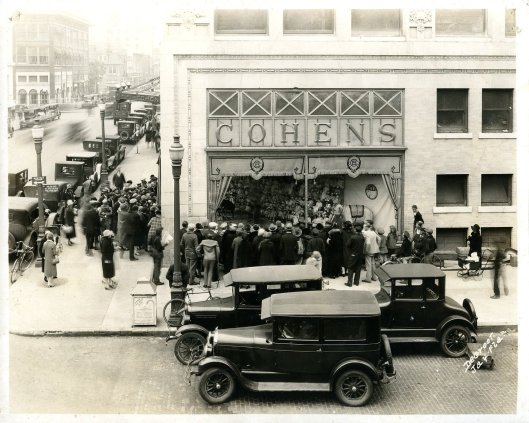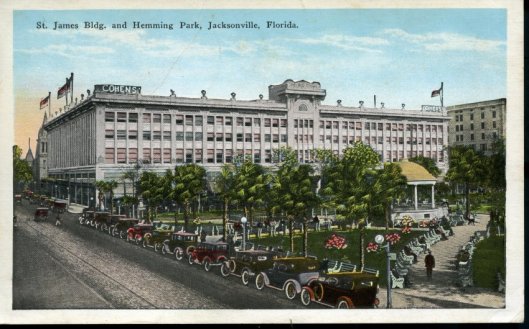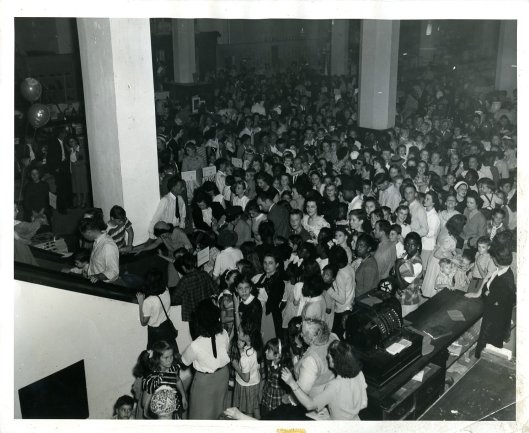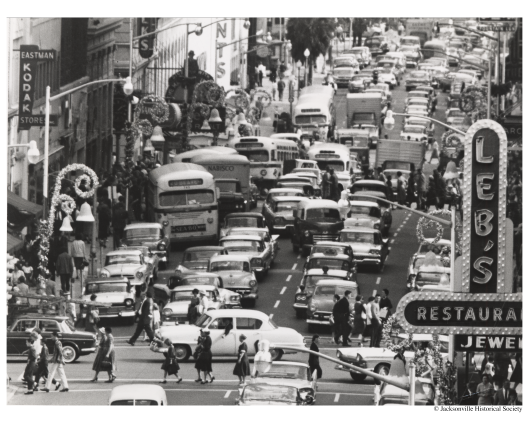Rolling Stones: No Filter tour
19 Friday Jul 2019
19 Friday Jul 2019
12 Friday Apr 2019
Posted in Events
16 Tuesday Oct 2018
Tags
I’m using my Adobe editing software on a tour through the Cummer Museum one more time before the annual subscription expires. The current exhibition is “Fields of Color: The Art of Japanese Printmaking” Most classic and modern genres are included in their permanent collection, which is sampled on this short video. I should have included artistic style on each title slide but, alas, did not.
Fields of Color: The Art of Japanese Printmaking is an exhibit of 20 prints on display through January 13th. Most of the prints are in the ukiyo-e style, meaning “pictures of the floating world.” These were popular from the 17th century to the 20th, depicting fleeting moments of pleasure, and were popular with the merchant class to decorate their homes.
Ukiyo-e subjects ranged from female beauties; kabuki actors and sumo wrestlers; scenes from history and folk tales; travel scenes and landscapes; flora and fauna; and erotica.
Shin-hanga, or “new print” developed as a movement in the 1920s. Global industrialization opened Japan to such European artistic principles as linear perspective, foreshortening, and shading.
04 Tuesday Sep 2018
Posted in Video
The Melting Pot: The Diverse Cultures of Northeast Florida is an oral history series produced by the Jacksonville Historical Society. The project records the life experiences of 15 immigrants to Jacksonville from around the world. Each video is approximately 45 minutes long. The project includes a compilation video of 30 minutes, enough time to tell everyone’s story in two minutes a piece. I am the project’s videographer and editor; the entire series can be found here.
Of course I posted the compilation video to my Facebook page. Glenn Gray, a friend and interviewee from the United Kingdom, gave me the greatest compliment, which, besides getting paid, made the effort worth the while.
“You’ve done a fantastic editing job on this Karen. It’s an impressive piece of work – very well planned and paced.”
The interviews were conducted by director emeritus Emily Lisska from January through May 2018, with series presentation in June.
“The Melting Pot: The Diverse Cultures of Northeast Florida is an oral history project to capture and showcase the stories of the area’s diverse population. This project is sponsored in part by the Department of State, Division of Cultural Affairs. the Florida Council of Arts and Culture and the Florida Dept of State.
The Jacksonville Historical gratefully acknowledges these local immigrants who shared their stories with the community.
Reggie Agulto, Manila, Philippines – Carlos Bouvier; Montevideo, Uruguay – Thoi Tran Bullard; Da Nang, Viet Nam – Augustus Cesar Carangue; Cebu, Philipinnes – Lorraine Corey; Homs, Syria – Aduibaje Davis; Gambaga, Ghana – Glenn Gray; United Kingdom Ruth Jernigan; Portoviejo, Ecuador – Shung Kwan and Min Kim; Seoul, South Korea – Jerry Nackashi; Kirkuk, Iraq – Yoon Park; Seoul South Korea – Taryn Rodriguez-Boette; San Juan, Puerto Rico – Shigeko Sams; Okinawa, Japan – T.K. and Rahul Sharma; New Delhi, India – Sonny and Deborah Ukpong, Nigeria
14 Monday Nov 2016
Posted in JHS Archives
Among what seems like thousands of photos in the archives of the Jacksonville Historical Society are hundreds of the retail mecca, Cohen Brothers department store. When it opened its Hemming Plaza store in 1912, its square footage made it the ninth largest department store in the country. For over 75 years Cohen Brothers was the shining star of downtown Jacksonville’s dynamic retail community.

In March 1928, Cohen Brothers retained Paramount actress Edna Kirby to “live” in a display window for one full week culminating with her wedding on the last night. (photo credit: Jacksonville Historical Society)
The Big Store, as Cohen Bros. came to be known, had its beginnings in the years just following the Civil War. The Cohen family emigrated from Germany to New York City to continue a family business in the dry goods industry. Brothers Samuel and Morris visited Jacksonville in 1867 and decided to set up a shop in the struggling yet resilient port city. Because they were established dry goods merchants, their store thrived from opening day.
But it was their brother Jacob (called the John Wanamaker of the South) who had the foresight and marketing savvy to establish Cohen Bros as the anchor of a bustling retail district. Around the store grew varied commercial trades.
Jacob Cohen was 13 years old in 1875 when he arrived in Jacksonville. By the time he was 18, Jacob was running the store. Cohen Brothers, The Popular Dry Goods House moved in 1897 to Florida’s first skyscraper, occupying in retail splendor the first two floors of the six-story Gardner building on Bay Street.
Meanwhile, Jacksonville’s population exploded to make it Florida’s largest city. At the time, Jacksonville was the nation’s most popular winter resort. “The Winter City in the Summer Land,” gained its fame due in no small part to extravagant steamship cruises on the St. Johns River. Several blocks north of Cohen Brother sat the St. James Hotel at Hemming Plaza (known then as St. James Park), one of the most glorious of the grand hotels in the South.
The St. James, as well as the adjacent Windsor Hotel, were destroyed in the Great Fire of 1901. On May 3rd, the fire devastated 146 blocks of downtown Jacksonville and over 2,000 buildings, including Cohen Brothers. The Windsor was the only hotel of 19th-century Jacksonville to be rebuilt.
The St. James property remained empty for years. Municipal development projects for the area were debated until the Windsor Hotel ownership bought the square block lot. The purchase would eliminate the possibility of a rival hotel from being built. Morris and Jacob Cohen acquired the property in 1910. The Big Store would be a complimentary neighbor for the Windsor. The merchants of Bay Street were sceptical of the move.

Windsor Hotel (upper left) and The Big Store overlooking Hemming Plaza, circa 1920s (photo credit: Jacksonville Historical Society)

St. James Building, Henry Klutho, architect, circa 1920s (photo credit: Jacksonville Historical Society)
The Cohens selected architect Henry J. Klutho, a Frank Lloyd Wright protégé, to design their new store. The Cohens wanted a two-story retail store. Klutho suggested a four-story mixed use building with retail space on the first two floors. The ‘Prairie School’ style St. James building gained national attention and acclaims soon after its completion. At the heart of the building was a 75-foot octagonal skylight flooding the interior with natural light.
The St. James building and Cohen’s Big Store opened on Oct. 21, 1912 drawing 28,000 visitors. By the late 1920s Cohen Brothers needed more retail space. Klutho suggested adding a fifth floor to save the skylight, but Jacob Cohen died before the plans were finalized. Cohen’s management commissioned an architectural firm in Nashville, Tenn. to draw up alternative alterations. Klutho was so disgusted with the finished building he moved his office to Springfield.
The Big Store remained a popular Jacksonville destination through the decades. In 1958, Cohen Brothers was acquired by May Company department stores. The store was re-named May-Cohen. The first floor and basement of the St. James building were renovated with an escalator between floors. The basement would become ‘a store within a store’ doubling May-Cohen retail space.

Cooking show at ‘Electrical Kitchen’ circa early 1940s. (photo credit: Jacksonville Historical Society)

Crowds waiting for the new escalators at May-Cohens circa 1960. (photo credit: Jacksonville Historical Society)
The urban landscape around May-Cohen expanded as well. May Co. entered into a joint venture with S.S. Jacobs & Co. to form Downtown Center on the day Cohen Brothers was acquired. A seven-story parking garage was planned and a $15 million multi-use building. As many as six major retailers would sit within a five-block radius of May-Cohens at Hemming Plaza.

W. Adams St., downtown Jacksonville’s retail district, circa 1952 (photo credit: Jacksonville Historical Society)
The early 1960s saw demographic shifts to the suburbs and major department stores followed the population to establish branch stores in outlying shopping centers. May-Cohen was a late arrival, in fact was the last major retailer in Jacksonville, to expand outside of downtown in 1965, to Regency Square Mall, one of the nation’s largest enclosed shopping malls.
By the end of the decade, the market share for downtown shopping fell to 25 percent. Jacksonville experienced the same downtown blight that affected most of the country. The 1971 Downtown Master plan was established to save The Big Store and nearby retail establishments. When work finally began in 1978 on a revamped Hemming Plaza, suburban malls were a firmly entrenched societal staple.
The Big Store would be the last major retailer to close its downtown Jacksonville store in 1987.
Thanks to “Cohen Brothers THE BIG STORE” by Ennis Davis and Sarah Gojekian, The History Press, available for sale through the Jacksonville Historical Society bookstore.
07 Thursday Jan 2016
Posted in Northeast Florida, Video
Jacksonville History Show: Adonnica Toler of the Ritz Theater and Museum and veteran Jacksonville broadcaster Harry Reagan discuss the “Black Wings: American Dreams of Flight” with special attention to the exhibition’s relationship to Jacksonville, and iconic Bessie Coleman’s aviation career. Jacksonville civil rights activist Alton Yates’s participation in aviation-testing crucial to the space industry is overviewed, as are year-round exhibits on view at the Ritz Museum.
The traveling Smithsonian National Air and Space exhibition at the Ritz Museum through Jan. 17th is based on the book “Black Wings: Courageous stories of African Americans in Aviation and Space History by Von Hardesty (Harper Collins 2008).
♠♠♠
Co-produced by University of North Florida Dept. of Communication